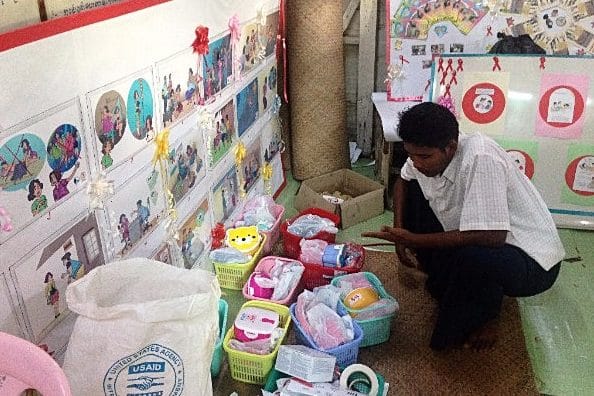On December 16, JCIE and the government of Japan held a conference on universal health coverage (UHC) and the new development agenda. The JCIE Global Health Special Series comprised four blogs that ran from December 12—also known as “UHC Day”—up until the start of the conference. This is the third of those blogs.
But for almost as long as this false dichotomy has existed, there have been voices advocating for a more nuanced understanding of these choices. These voices assert that disease-specific and systemic types of interventions are not mutually exclusive, but very much complementary.
All communicable disease campaigns have overwhelmingly demonstrated that only through falling back on strong basic health services in developing countries is it possible to achieve an effective consolidation of these campaigns.” —H. Mahler, The Tuberculosis Programme in Developing Countries (1966)
Many of global health’s biggest success stories to date have resulted from efforts to address specific epidemics: The WHO’s smallpox eradication program, implemented through a global immunization campaign, remains one of public health’s greatest achievements to date. Gavi, the Vaccine Alliance, has immunized over half a billion children and saved over 7 million lives since 2000 through a focus on ensuring the supply and delivery of vaccines to developing countries. The Global Fund to Fight AIDS, Tuberculosis and Malaria was established in 2002 in response to high-level political commitment to addressing the severe funding shortages for intervention programs targeting the world’s three biggest communicable diseases.
While the benefits of these campaigns are clear when we look at the numbers—deaths prevented, healthy life years added—some of the most valuable impacts of these programs have been in the strengthening of health systems and in the expansion of access to broader health services that disenfranchised populations would otherwise not have. The WHO is now one of the world’s leading champions of the UHC concept, and both Gavi and the Global Fund have recognized that vertical and horizontal approaches are necessary in tandem, incorporating funding streams for health system strengthening among their grant disbursements. Even funding intended to focus on just one disease can often have “spillover” effects that help expand access to other services, acting as an entry point to building UHC in that country’s context.
Last year, JCIE staff visited Global Fund–supported projects in Ethiopia and Burma to witness this in action, and we found the following:
Ethiopia:
Global Fund support has been used to build their acclaimed health extension program, helping train a cadre of over 38,000 community Health Extension Workers, which comes out to 2 stationed in every kebele [neighborhood] in the country. Ostensibly, nobody in Ethiopia is farther than 10km from a health post today.
Funding has also supported Ethiopia’s health system infrastructure through the construction of warehouses for pharmaceuticals and equipment, and through the development of the IT infrastructure and the managerial capacity of pharmaceutical supply chain staff.
Microscopes and other laboratory equipment with multiple uses have been procured through Global Fund grant programs as well.
Read more about JCIE’s Ethiopia case study.
Burma:
Drop-in centers for commercial sex workers and men who have sex with men help draw these marginalized and stigmatized populations into the health system by offering basic prevention, diagnosis, and treatment services and providing referrals to those who can treat them without discrimination.
Generators purchased with Global Fund support keep critical equipment in laboratories running despite frequent power outages.
Financial management training sessions for officials administering Global Fund grants in-country and on-the-job training of public officials have broader benefits as the trainees take those skills with them when they move to other roles in government.
Read more about JCIE’s Burma case study.
The need to focus on synergies between the horizontal and the vertical was made clear in the aftermath of the Ebola outbreak, as the countries that experienced the most devastating death tolls and economic impact were those with weak systems incapable of handling emergency disease-specific interventions, even with external assistance. Vertical and horizontal approaches are not a zero-sum game. As we embark on a new development era defined by increasingly cross-cutting solutions to the global challenges we face, we have the chance to rewrite paradigms and redefine the terms of human development. In allocating resources for health it would behoove us to recognize that disease-specific programs, when designed appropriately, can contribute to UHC without diluting their core mission.
JCIE Global Health Special Series
Lessons from Japan on Universal Health Coverage, Susan Hubbard, JCIE/USA (December 12, 2015)
Viewing UHC through a Human Security Lens, Marcelo Korc (Pan American Health Organization) and Susan Hubbard (JCIE/USA) (December 13, 2015)
Lessons from Japan’s “T-Shaped” Approach to TB, Keizo Takemi, Member, House of Councillors of Japan (December 15, 2015)


